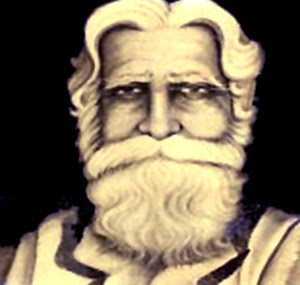:::::Pradhana karma (Main operative procedure)::::: Cont.
Vasthi karma (Enema)
Vasthi
denotes the procedure in which drug is administered through the rectum. In this
process the drug is given in the form of decoction, medicated oil and liquid herbal in
to the rectum, which has to be retained.
It is the best treatment for Vatha
dosha and its disorders but it is equally effective in Pittha, Kapha and Raktha doshas and their disorders
provided the appropriate drugs are added in its preparation. According to types
of drugs Vasthi karma is
divided in two main types.
- Anuvasana Vasthi - medicated
oils.
- Niruha Vasthi -
medicated enema of decoctions and medicated oils.
Indications
of Vasthi Karma
Mainly
indicate for Vatha disorders like
arthritis, rheumatism, gout, muscle
spasms, backache, and sciatica and joint pains. Other than that Constipation,
distention, chronic fever, sexual disorders, kidney stones, heart pain and also
helps to rejuvenate the body, provides strength and long life, and
improves the complexion and the voice.
Contra-Indications
of Vasthi Karma
Vasthi should not be given to persons
suffering from bleeding from rectum, diarrhea, cough, shortness of breath,
chronic abdominal pain and severe anemia.
Nasya Karma (Errhine)
The nasal administration of medication is called Nasya. According to Ayurveda the nose is the gateway of the head. So, systematically
performed Nasya karma cures almost
the diseases of the head easily. It cleanses and opens the channels of the head
and improves the oxygenation.
It
is particularly useful in the treatment of diseases occurring in the organ is
situated above the clavicle and promotes the functions of sensory and motor
organs and renders the mouth free of bad smell.
Indications
of Nasya Karma
It specifically prevents Stiffness in the head, shoulder,
neck, and jaw, chronic coryza, deviated Nasal septum, tonsillitis,
cataract , migraine, shoulder pain, diseases of mouth, nose, ear and eye,
sinusitis, mental disorders parkinsonism, facial Paralysis, hoarseness of voice, toothache and
other tooth disorders. Nasya karma enhances the activity of sense organs and prevents the
diseases of head. It also prevents the early aging process.
Contra-Indications of Nasya Karma
Nasya should not be given after head bath
or exercise, after having oleation, taking alcohol, water or meal, during
hunger and thirst, persons suffering from nasal bleeding, exhaustion, syncope,
acute fever and in state of pregnancy.
Raktha Mokshana (Blood
letting)
Extraction
of vitiated blood from the body by using Shastras
(Using surgical instruments) & Anushastras
(Using other tools) is known as Rakta Mokshana.
Types of Rakta Mokshana
¤ Using surgical instruments
- Pracchana (Incision) - Scratching with a sterile scalp is
indicated to drain the accumulated blood from a particular point.
- Shira vedhana (Venipuncture) – It is devised whenever vitiated blood
circulates in the body.
¤
Using
other tools
- Jalouka prayoga (Leach application)
- Deep-seated
blood can be extracted with the help of leach application.
- Shringavacharana (Application of horn
for aspiration) - Horn of cow or
deer to withdraw vitiated superficial blood after scraping, taking the
advantage of its hollowness.
- Alabu (Application of Alabu
for cupping) - A
fruit of Cucurbita lagnaria or vulgaris is dried and internal part is
taken off, the hollow part is used for evacuation of blood by sucking method.
- Ghati
yantra (Cupping method) - To
drain the vitiated blood, which has settled in different layers of the skin,
cupping is useful.
Indications
of Raktha Mokshana
It is useful in
Pittha and Raktha doshas. Mainly skin disorders, the diseases which are not
respond to other treatment in chronic stage. Chronic heart disease, Acute lobar
pneumonia, uremia, acute pulmonary oedema, acute pericarditis, Enlargement of
spleen and liver, Blood born diseases, Gout, Tumors and glandular enlargement, Deep
venous thrombosis, varicose veins,
snake bites and Suffering from poison are responded to blood letting. It
increases appetite, relieves Ama dosha
and long effect produces pure blood (Shuddha
Raktha).
Contra-Indications of Raktha
Mokshana
Raktha
Mokshana not suitable for pregnant woman,
postnatal period, Chronic Jaundice, Impotency, Hemorrhage, Paralysis,
Diarrhoea, Vomiting, Dysponea, Ascitis, Anemia and also Below 16 years above 70
years aged persons.
:::::Pashchath karma (Post operative procedure):::::
Pashchath karma is a third and concluding phase of Pancha
karma. It refers to the body after main
operative procedure. It involves re-establishment of the digestion and the replenishment
of the body tissues that have been detoxified. There are three different
types in Pashchath karma.
¤
Sansarjana
karma – Restoration of digestive power by advocating specific
diet after completion of Shodhana
therapy.
¤ Shamana
karma – Administration of medicines required to treat the
particular disease, after the process of elimination.
¤ Rasayana
karma – Administration of drugs which are amplified energy
level, strengthened immune level and also increased longevity.
Contra-Indication activities during Pancha karma
Therapy
v Speaking
loudlyv Travelling
by vehiclesv Too
much walkingv Continuous
sittingv Taking
diet before the previous meals gets digestedv Unwholesome
dietv Sleeping
in day timev Coitus










